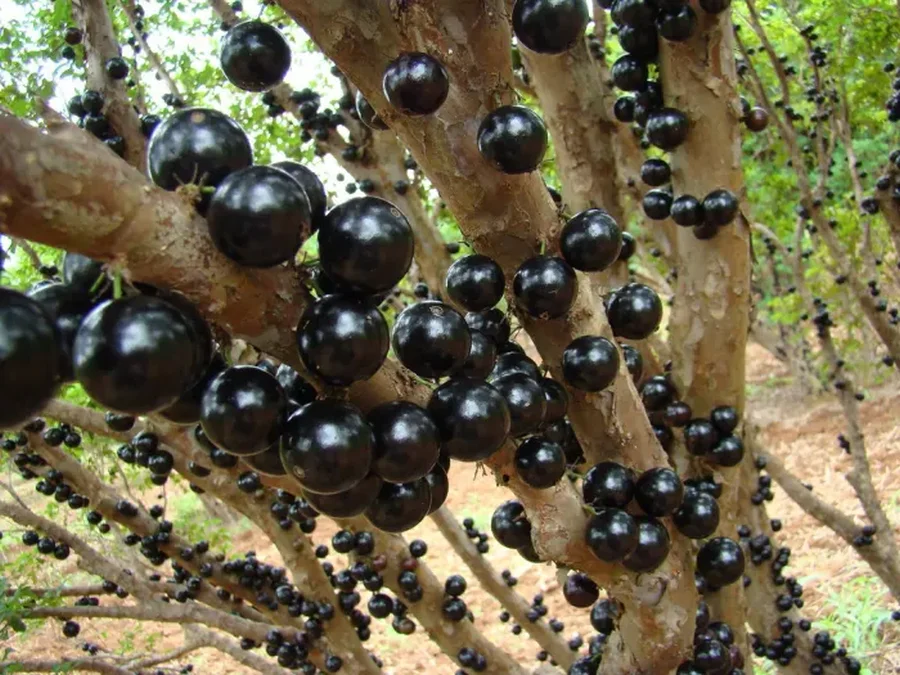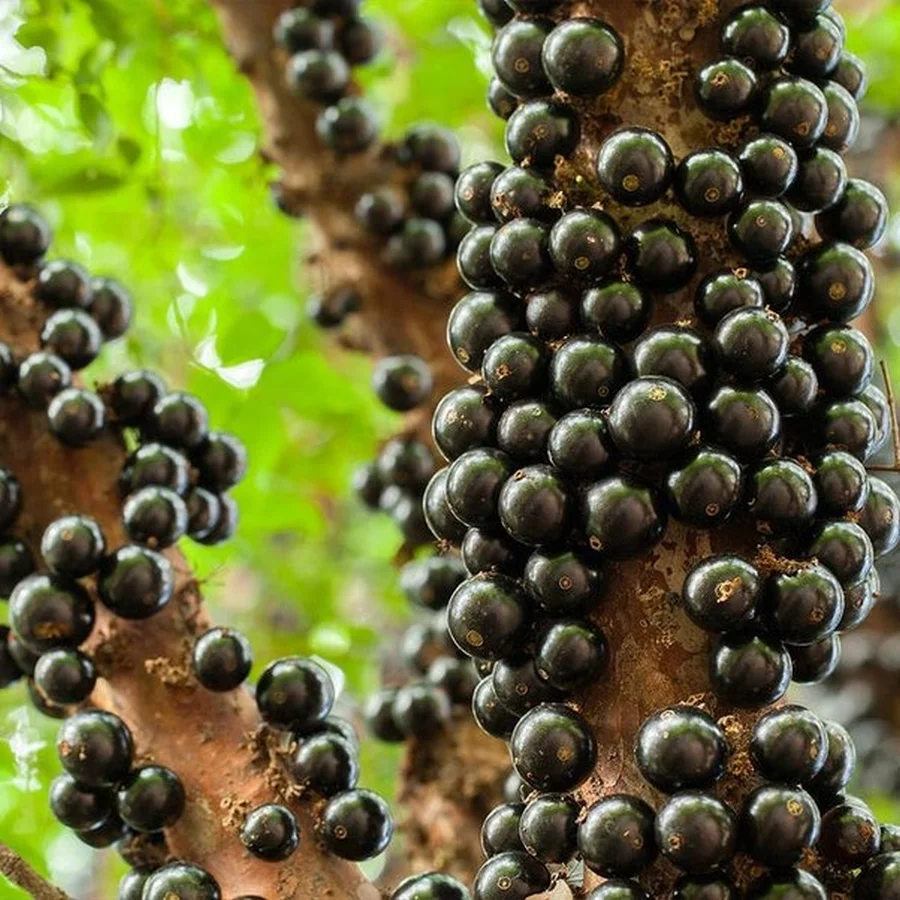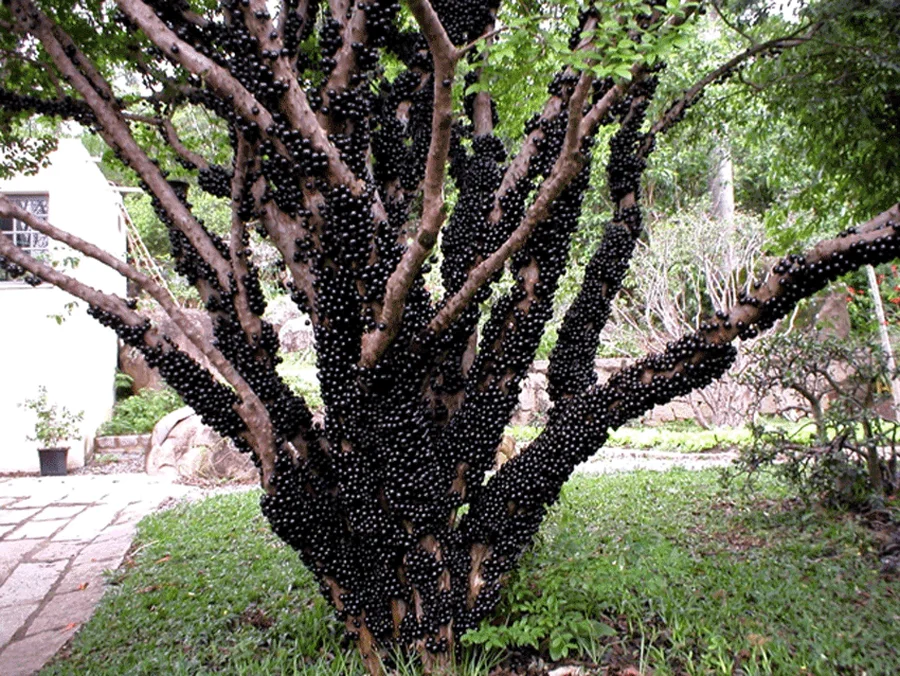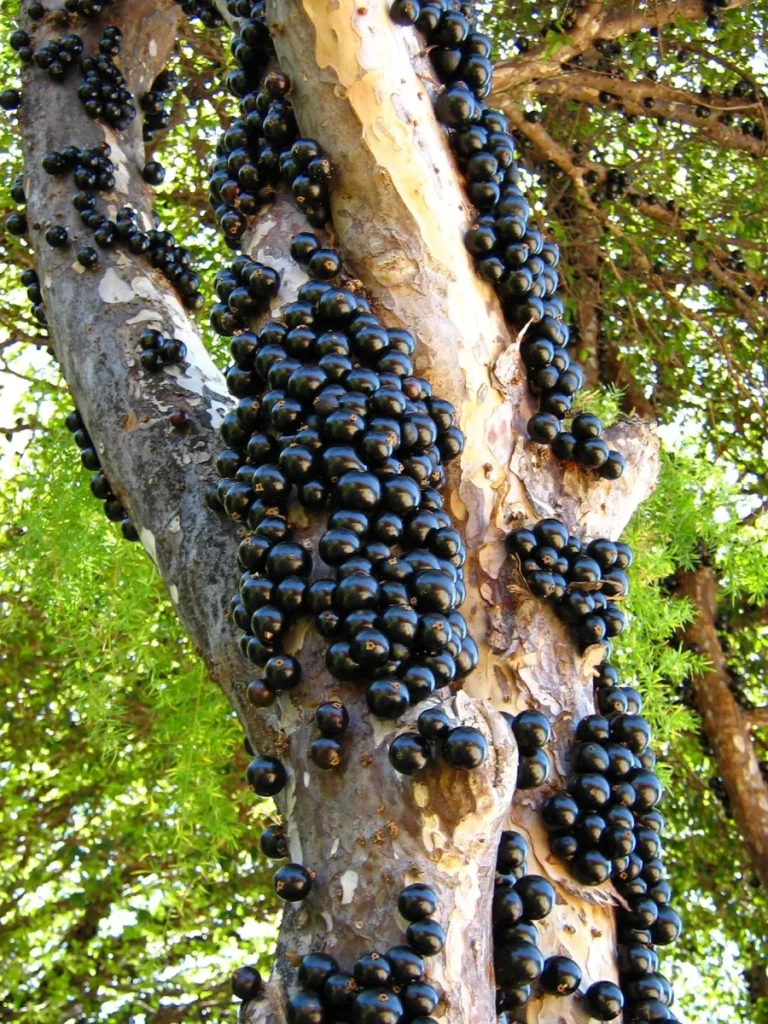
In world of exotic fruits few capture the imagination quite like the Jabuticaba. Hailing from Brazil, this intriguing fruit possesses a characteristic so unique it immediately sets it apart: it grows directly on the trunk and branches of its tree.
This peculiar growth habit, combined with its delightful taste and rich cultural significance, makes Jabuticaba a true gem of the botanical world. It challenges our typical notions of how fruit develops, presenting a fascinating spectacle of nature’s diversity.
Why does Jabuticaba stand out even among other exotic fruits? While many tropical fruits boast vibrant colours or unusual shapes, the Jabuticaba’s distinction lies in its cauliflory – the botanical term for plants that flower and fruit directly from their main stems or woody trunks rather than from new growth and shoots.
This makes a fruiting Jabuticaba tree an unforgettable sight, appearing as though bunches of dark, grape-like orbs have been glued onto its bark.

This unique presentation, coupled with its ephemeral nature and delicious flavour, elevates it beyond mere novelty.
Origin and Botanical Characteristics
The Jabuticaba tree (Plinia cauliflora) is native to Southeastern Brazil, particularly flourishing in the states of Minas Gerais, Goiás, São Paulo, and Rio de Janeiro.
It holds a special place in Brazilian culture, often found gracing backyards and orchards, its harvest a time of communal gathering and enjoyment.
The fruit is deeply embedded in local traditions, symbolising abundance and the richness of the Brazilian landscape. Its presence in local markets during its short season is eagerly anticipated.
The most striking botanical feature is, undoubtedly, its cauliflorous nature. Why does it grow this way?
Theories suggest this might be an evolutionary adaptation to attract animals that climb trunks or dwell near the ground, aiding in seed dispersal in its native forest environment. Regardless of the reason, the effect is visually stunning.
The tree itself is typically a slow-growing evergreen, often reaching heights of 10-15 meters, though it can be kept smaller. It features smooth, peeling, tan-to-reddish bark, similar to a guava tree, and small, glossy green leaves.

Before the fruit appears, the trunk and branches are adorned with small, white, fluffy flowers, directly emerging from the bark, which then transform into the characteristic fruit.
The fruit itself is round, about 3-4 cm in diameter, with tough, dark purple-to-black skin encasing a translucent, jelly-like white or pinkish pulp containing one to four seeds.
Flavor and Nutritional Benefits
Pop a Jabuticaba into your mouth, and you’re met with a burst of flavour often likened to a muscadine grape, but with its own unique tropical complexity.
The sweet, translucent pulp offers notes reminiscent of lychee or mangosteen, while the slightly thicker skin contributes a pleasant tartness and subtle tannins.
It’s best enjoyed fresh, often eaten out of hand right after picking, by squeezing the pulp directly into the mouth, discarding the skin and seeds, although the skin is edible and nutritious.
Beyond its captivating taste, Jabuticaba is a powerhouse of nutrition. It is particularly renowned for its high concentration of antioxidants, especially anthocyanins, the pigments responsible for its deep purple colour.
These compounds are known for combating oxidative stress in the body. The fruit also provides a good source of Vitamin C, calcium, phosphorus, and iron. Traditionally, the skin has been used in Brazilian folk medicine.
Modern research points towards potential health benefits linked to its antioxidant content, including anti-inflammatory properties that may help manage chronic conditions, and potential anti-aging effects attributed to its ability to fight free radical damage.
Culinary Uses and Traditional Preparations
The most cherished way to enjoy Jabuticaba is fresh from the tree, savouring its unique flavour at peak ripeness. However, due to its relatively short shelf life – the fruit ferments quickly after harvest – Brazilians have developed numerous ways to preserve its essence.
Jabuticaba jam (geleia de jabuticaba) is a national favourite, capturing the fruit’s sweet and tangy profile perfectly. It is also commonly used to make juices, delicious homemade wines, and potent liqueurs, which allow its flavour to be enjoyed year-round.
In traditional Brazilian cuisine, beyond jams and drinks, the fruit might flavour desserts or even lend a unique touch to certain savoury dishes, though this is less common. Its versatility is gradually being discovered outside Brazil too.
Chefs and food enthusiasts around the world are incorporating Jabuticaba into gourmet desserts, sauces, and cocktails, drawn by its exotic appeal and complex flavour profile. You might find it in specialty markets or as an ingredient in artisanal food products aiming for a touch of the tropics.
Cultivation and Sustainability
Cultivating Jabuticaba requires patience and specific conditions. It thrives in subtropical to tropical climates with ample rainfall and prefers rich, deep, slightly acidic, well-drained soil.
While relatively pest-resistant, the primary challenge for cultivators is its notoriously slow growth; trees grown from seed can take 10-20 years to bear fruit for the first time.

Grafted trees can significantly reduce this waiting period, often fruiting within 5-8 years, making them a more popular choice for both commercial growers and hobbyists.
Farmers and home gardeners typically provide consistent watering, especially during fruit development, and occasional fertilisation. Due to its slow growth and specific climate needs, large-scale commercial production outside its native regions remains limited, contributing to its exotic status.
Sustainability concerns are generally low as the tree is not typically associated with deforestation or intensive farming practices. Conservation efforts often focus on preserving genetic diversity within Brazil and promoting its cultivation in suitable agroforestry systems, where it can contribute to local biodiversity and provide a valuable, albeit seasonal, crop.
Fun Facts and Cultural Significance
The name “Jabuticaba” itself adds to its mystique, believed to originate from the indigenous Tupi language, possibly meaning “like turtle fat” or more commonly cited as “the place where tortoises are found” (jabuti meaning tortoise, and caba meaning place).
Witnessing a mature Jabuticaba tree laden with fruit is a truly remarkable spectacle, unlike almost any other fruit tree. The stark contrast of the dark fruit against the lighter bark creates a polka-dot effect that is both beautiful and bizarre.
Its short fruiting season, often occurring multiple times a year depending on the climate and irrigation, leads to a flurry of activity as people rush to harvest and consume or preserve the ephemeral bounty.
This seasonality enhances its cultural value, making its appearance a celebrated event in its native regions.
Conclusion
The Jabuticaba is far more than just a fruit; it’s a botanical marvel and a cultural icon. Its unique trunk-fruiting habit, coupled with a delightful grape-meets-tropics flavour profile and notable nutritional benefits, secures its place as one of the world’s most fascinating exotic fruits.
From its origins in the Brazilian forests to its growing appreciation on the global culinary stage, the Jabuticaba invites curiosity and rewards the palate.
Whether experienced fresh off the peculiar bark, savoured in a traditional jam, or discovered in a novel culinary creation, the mysterious trunk-growing fruit of Brazil offers a unique taste of nature’s ingenuity and cultural heritage.
Q&A
What does a jaboticaba taste like?
Jaboticaba offers a unique flavor often compared to a sweet Concord grape or lychee. The juicy, translucent pulp is primarily sweet with a pleasant, mild acidity or tang. The edible skin adds a slightly tart, sometimes tannic dimension, contributing to its complex, aromatic taste profile enjoyed best when freshly picked.
What are the side effects of jaboticaba?
Jaboticaba is generally safe for consumption and not associated with significant side effects for most people. However, eating excessive amounts, particularly including the tannin-rich skin, could potentially cause mild digestive upset in sensitive individuals. As with any food, rare allergic reactions are also a possibility.
What is the English name for jaboticaba?
While ‘jaboticaba’ (pronounced ja-BO-ti-KA-ba) is widely used and accepted as its name in English, the fruit is also commonly known as the ‘Brazilian Grape Tree’. This English name highlights its origin and the resemblance of its fruit, which grows directly on the trunk and branches, to grapes.
What is jaboticaba fruit good for?
Jaboticaba fruit is renowned for its health benefits, primarily due to its rich concentration of antioxidants, particularly anthocyanins concentrated in the dark purple skin. These compounds help combat cell damage. The fruit also supplies Vitamin C, fiber, and essential minerals, contributing to overall wellness and potentially offering anti-inflammatory effects.